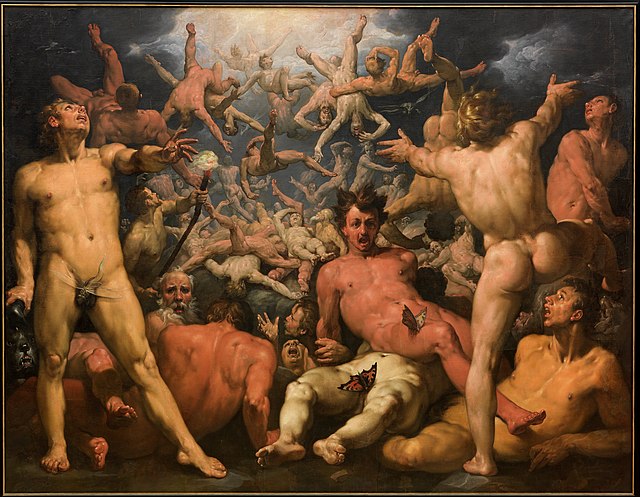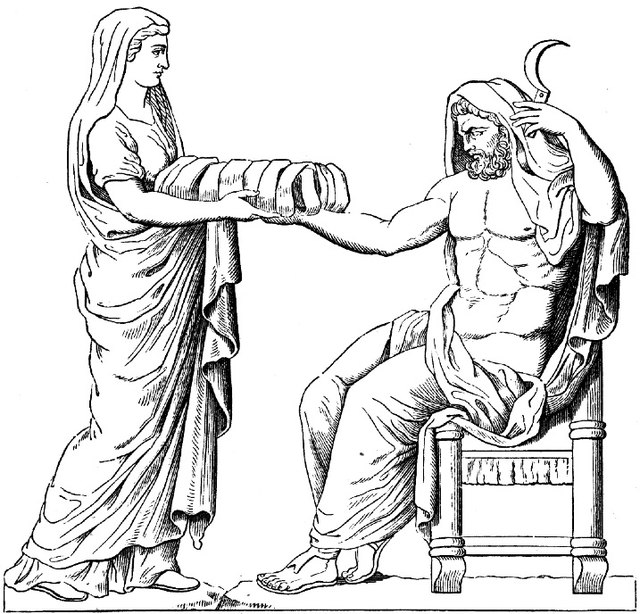Theia, also called Euryphaessa "wide-shining", is one of the twelve Titans, the children of the earth goddess Gaia and the sky god Uranus in Greek mythology. She is the Greek goddess of sight and vision, and by extension the goddess who endowed gold, silver, and gems with their brilliance and intrinsic value. Her brother-consort is Hyperion, a Titan and god of the sun, and together they are the parents of Helios, Selene, and Eos. She seems to be the same figure as Aethra, who is the consort of Hyperion and mother of his children in some accounts. Like her husband, Theia features scarcely in myth, being mostly important for the children she bore, though she appears in some texts and rare traditions.
In the frieze of the Great Altar of Pergamon (Berlin), the goddess who fights at Helios' back is conjectured to be Theia
In Greek mythology, the Titans were the pre-Olympian gods. According to the Theogony of Hesiod, they were the twelve children of the primordial parents Uranus (Sky) and Gaia (Earth), with six male Titans—Oceanus, Coeus, Crius, Hyperion, Iapetus, and Cronus—and six female Titans, called the Titanides or Titanesses—Theia, Rhea, Themis, Mnemosyne, Phoebe, and Tethys. Cronus mated with his older sister Rhea, who then bore the first generation of Olympians: the six siblings Zeus, Hades, Poseidon, Hestia, Demeter, and Hera. Certain descendants of the Titans, such as Prometheus, Atlas, Helios, and Leto, are sometimes also called Titans.
The Fall of the Titans by Cornelis Cornelisz van Haarlem (1596–1598)
The Mutilation of Uranus by Saturn: fresco by Giorgio Vasari and Cristofano Gherardi, c. 1560 (Sala di Cosimo I, Palazzo Vecchio)
Rhea presenting Cronus the stone wrapped in cloth
"Fall of the Titans". Oil on canvas by Jacob Jordaens, 1638.





